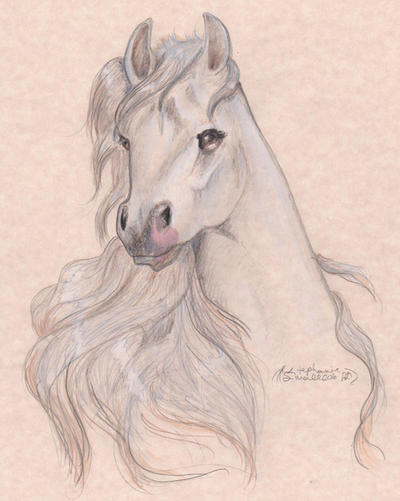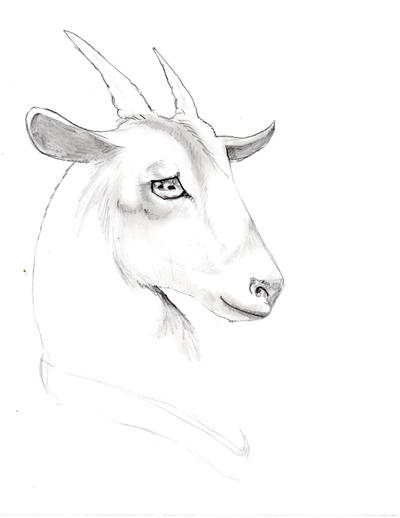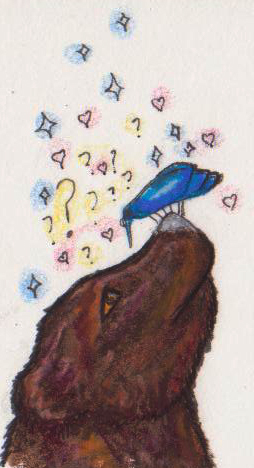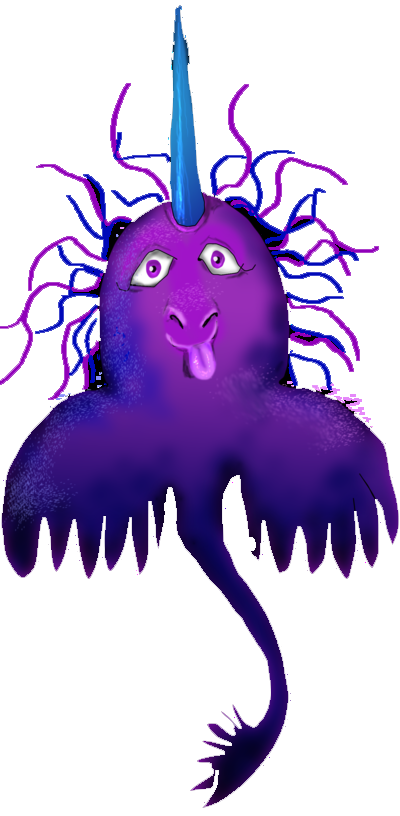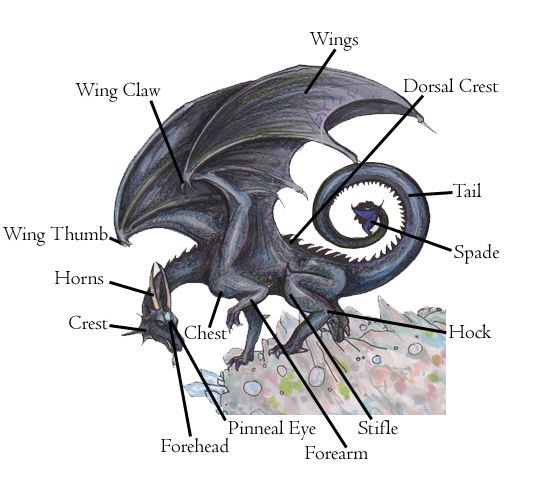The massive bear bellowed in the hollow cavern, his long dark eyes gleaming as he roared and leapt at the man. The man tried desperately to escape, but the huge paw came sweeping out. With a cry of his own, he tried to swing at it with the only weapon he had, a length of bull horn. The large bear snarled, his gleaming teeth flashing as he swung the bulky head down. The horn landed the bear across the snout and face. A sickening crunch sound answered, and the bear was swinging wild. The man would have done more had the bear stood still, he though grimly. The monster roared, teeth gnashing into the man’s shoulder. He wailed, and kicked back, planting a foot squarely on the wounded beast’s chest. The bear swung with its arms downward, and blood ensured. The man cried out, like the bellow of a bull, pushing up with the horn in a violent upward sweep as the bear plunged down with its thick claws.
============
“We are very excited about this find. I am so glad you could make it out. There are human, bull and bear remains. I know it’s a long trip.” Said Alicia as she lead us to the site. “We have made some interesting discoveries here before, but this is very exciting. I am glad you are here to let us know what kind of body it is. We’ve been trying to determine the age of the bones.”
Alarmed, Tariel looked at the woman “Wait, did anyone touch the bones?” She asked.
“Yes, Professor Corvid.” She answered. Tariel sighed, who knew what could have been changed from someone touching the body. “He’s an archeology professor at the college out here.” continued the woman, not noticing Tariel’s slumped shoulders.
They entered the cave and Tariel admired it as it was. Thick lines built up in the walls in red, white and ebony made dark streaks of wild looking bulls, horses with round bellies, raging mammoths and other, strange horned creatures. Tariel looked around, a soft glaze of crystal on some of the walls surprised her. She turned, taking in all the details. Long, sinuous stalactites and stalagmites pointed up and down from some of the places. Water had long ago damaged some areas, but others were remarkably well preserved from the gleam of crystals. Even a few bones lay in disarray. That happened sometimes, when places were abandoned for whatever reason. There were a few bodies around, but along the floor was a worn path. Broken crystals and bits of tossed dirt lead toward the back of the cave. In the center of the large chamber, lay the piles of white bones. She moved along, looking at the bones as clearly as she could. She began to examine them, her eyes running along the dark ridge marks that marred the bone. She began the excavation, looking over it to try to identify what she was seeing.
“Do you think you’ll be able to identify which culture you are seeing, or what this is?” Alicia asked, her eyes going wide as she looked closer, as if that would allow her to see what Tariel was noticing. Tariel’s eyebrows knit together as she scanned the bones. Her shoulders tightened as she straightened.
“Yes.” Tariel’s voice grew haunted “I can.” and she moved away as though dodging a venomous serpent. “But you’re not going to like what I have to say.” She turned to look at the woman. “This body is recent, this is not an ancient person.”
==============
Officer Dietrich moved over, his eyes taking in what he saw. “This appears to be an animal attack?” he asked, scanning the body.
“I didn’t say that, really, I told your deputy that there were signs of an animal attack. A lot of damage, some of it to the bone.” Tariel responded as she walked over to the officer who was kneeling and monitoring what he saw. Tariel stopped, suddenly looking at the officer and not wanting to get too close. She wasn’t sure why she was so nervous. Was she always this way around police? Or was he just special? She flushed and turned back to paying attention to what she saw. This was a recent body, and unlike the ones she’d seen in her internships, this was an unsolved mystery. Something she never would have thought to find herself in. The officer wanted her to stay though, her education on the subject of ancient bodies was still applicable.
“So what is this?” He asked, turning his attention to he scythe like horn by the skeleton’s side. “It appears to be what killed him” He says, looking at the horn wedged beside a couple of ribs.
“Well, there have been a few people here to move things around” Said Tariel. “I tried to be careful, but I was told a professor was here who had looked at it. Perhaps we should see if it looked that way. It could be a tool. It has crystallization on it that indicates it is part of this site landscape, since it has the same crystallization. You can tell from this dark patina, that there has been some urination here by this body. It changes the cave. Looking at the body, and judging by fact the skull looks male and the sacrum is tilted forward and the ilia lie close together, creating a narrow pelvic outlet, I am sure this was a man.” Tariel said, leaning back on her heels.
“The incisors are spatulate, and no notable flaring in the nasal opening, which could indicate European Caucasian descent, but its too hard to tell, since there are many indicators. Race is hard to tell, but we need to identify the body. Do you think you could see how long ago this happened?” Asked Officer Dietrich.
“I can see,” answered Tariel “I have never tried. But looking at those teeth, those wisdom teeth had just emerged, in fact, since they are still growing in, I would judge this man at just over 21.” She shook her head “So young.” She said with pity then sighed as she contemplated the room. “Looking at the surroundings, the person did not have much time to alter the surroundings. In fact, they may have just discovered it. I see signs of bear, paws, prints in the sand, but some have been disturbed. Based off of the size of the bones, I would guage his height to be around 5’6” and his weight to be on the lighter side.”
Officer Dietrich turned his attention to the marks, “Some of these are modern” he observed. “I see several footprints here.” Commented the officer as took a few pictures and motioned for the photographer to do the same. “In fact, I am interested in this now that you mention it. I heard you say that someone else had been here. I see footprints, barefoot, some bear prints, your shoes, he motioned to her. Our shoes, he motioned to the officers, her shoes, he pointed out Alicia and I understand the professor was here. But that does not account for these.” He motioned to some prints, partially covered as they moved along the edge, separate from the other prints. “These are fine prints. Good shoes, look at it, and they have something going on with them.” The officer commented on the strange color near the prints.
“That is signs of bear urine and the bear skeleton in the rear part of the cave may be responsible.” Tariel said “but for the marks to appear like that, the prints walked through wet urine. You can tell by the patina that it was urine. Bears do not normally urinate inside, particularly in their den, so that is very unusual. Normally they like to go outside, even when hibernating, they do not urinate, instead they recycle the waste, breaking it down into reusable pieces. Bears may get more muscle after they hibernate!” Tariel rambled, then realized she was talking because she was nervous and she blushed. “Oh, here I am rambling on about Ursine Urinary habits, but it is fascination.” She flushed and turned away. “well, the biology behind it, you know” She grew more and more flustered. For once, the officer’s face broke into a bemused smile and the frigid features gave way to a gleaming grin.
Tariel turned away, eager to change the subject. “Well, lets see.” She said, turning back to the man’s body, and the mysterious extra footprints. Who would walk through bear urine? Who would brave it? But sure enough, ebony patinas made their way partially to the back of the cave as if someone were seeking out the bear. Tariel followed, eager to see the bear and what it displayed. They looked over the bear’s body and she was surprised to find that in the skull, there was a thick, wicked hole. “This matches that horn we saw. It went in the eye socket with a downward trajectory. The bear probably didn’t kill that man immediately, but I think it may have lead to his final death from his wounds. The bear was likely killed very fast.” Tariel said as she looked over the massive pile of bones. “This was a huge bear, and out of place for the area. This is not a local bear. She realized with surprise.”This bear is a brown bear, they have not been in this region for a long time. I am assuming this from the size, the shape of the claws which are longer and straighter claws. You can see the shoulders were larger and probably had that telltail “hump.” I think you’re looking at a zoo escapee or something. I see no signs of denning or hibernation. There’s no sign that the bear even lived here.” She realized as she looked around, trying to identify if the bear had been here long. “There is no natural digging on behalf of the bear, in fact, most of the prints are singular trails. The bear was not here long.”
“Well,” answered Officer Dietrich, “I guess we will finish up here and do some research into the zoo issue. I will contact you if we need your assistance further. Would you be interested in being a consultant for further animal questions?”
“Of course,” answered Tariel “I am always available to help.”
===========
“I am glad you were able to make it” Officer Dietrich told Tariel. “I found that there were no missing bears from any zoos, circuses or anything, so I started to look in private certifications. No missing bears. Except one, but get this, this bear disappeared six years ago from a Bear reserve an entire state away. What does that look like to you.” He pushed a manila envelope across the table.
Tariel pulled out photos of a small bear cub. “This young male cub was taken from the sanctuary six years ago. Rumor has it, that since this sanctuary was on a known drug route, it was taken by someone involved in drugs. The case had been dropped and it was assumed that the bear was poached.”
“Well, it’s the same breed, it appears, and due to the size, it could be the same age. Lets see.” She looked it over. “Yes, it’s a brown bear.” Tariel looked over the photos of the bear image, and noticed a building in the background. She tried to read it. “Fourhills Diabetes Researchers” she said aloud. Officer Dietrich looked over. “Yes, its nearby another business.”
“Why would this be on a known drug route? What is near it?” She asked.
“Not much, local officers had been identifying some of the traffickers, additionally, they found they went through this town.” Tariel looked over the images again.
“Well, they must be there for a reason, and I don’t think it was a bear. In fact, I think it was an accident. Many people would love a small bear, not realizing it gets larger. I say, find out why someone would have to go there around that date, and maybe you’ll know more.” Stunned, the officer shook his head. “I will have them check in on it there, but medical information can be difficult to monitor due to confidentiality.”
“Well, they have to find a way to let you get the information.” Tariel smiled, sipping coffee as she looked over the image. “It is cute. Someone probably thought that when they saw it.” She turned back to her coffee, mulling over what she’d heard.
==============
The officer welcomed her. “I am glad to see you, I believe you’ve really helped more than you think. We were able to get the information, and on the day the bear went missing, there was only one transaction. Surprisingly, or not, it was the daughter of a known drug dealer, but she was found murdered about a year and a half ago. They found her body not far from here, in fact. Tariel felt ready to cry. That was not what she was expecting to here.
“She was murdered. She was diabetic.” Her brain was trying to process. “Yes, we brought her father in for questioning. We have a warrant to check the property. Then, we’ll be interviewing him. I want you in the back, watching through the one way mirror and let me know if you can tell me if he’s being honest. Tariel nodded numbly.
“When?” She asked faintly.
“Now, if you can, first we check the property we have the warrant for, then we check him with the interview.” She straightened, trying to hold back the regurgitation that threatened to sneak into her mouth. She nodded, swallowing the vile feeling in the pit of her stomach.
“I will, it won’t save any lives, but maybe it can answer some questions.” She said softly. “The bear must have gotten loose? They don’t think the bear is who killed the girl, right?”
“Actually, that is where things get weird. You see, the girl’s killer may have been that body we found.” Startled, Tariel looked up, her green eyes wide with shock.
“Are you serious.”
“I am a police officer. I am always serious.” Officer Dietrich said, looking down at the paperwork. Tariel looked down, then glanced back up.
“I am ready.” She said softly, standing straight, and with that, he lead her to the room to watch the interview.
=============
“Thank you for meeting with us, Alan Willers. Did you kill Rod Cervos?” Officer Dietrich asked with concern to the man he was interviewing. The man showed little expression.
“No.” he said, his voice loud, firm. Office Dietrich and Tariel watched from their particular places, trying to determine what had occurred. Tariel watched the man’s behavior. She had supplied some questions.
“What did you call the bear?” Asked Officer Dietrich?
“What bear?” Asked the man. “A teddy bear.” He asked. Something about the way he said that, peaked Tariel’s interest. The way his eyes lit up, the way his mouth twitched on one corner only indicated that he did know something. She leaned forward watching him.
“Did you know Rod Cervos.” He asked. The man’s eyes grew shadowed. He very carefully said his reply.
“I did. I think you know that.” He said, the fury in the room nearly palpable the way he snarled the words out low and slow.
“We looked over your property and we found some interesting features. Some time ago, you appear to have had a bear on your property. Near the barn we found indications that a bear had once hibernated in one of the stalls. Hibernation plugs that didn’t completely disintegrate were found in front of the barn. I find it hard to believe that you would need metal caging to keep in any horse that I know. We both know that bear was on your property.” Officer Dietrich said coolly.
“Look! That man killed my daughter, it was only just deserving that her Teddy destroy him.” Hissed the man at the officer. Dietrich looked surprised at the answer. “I just finished what the bear couldn’t end. What does it matter. She’s gone….she was the only thing I ever cared about.”
